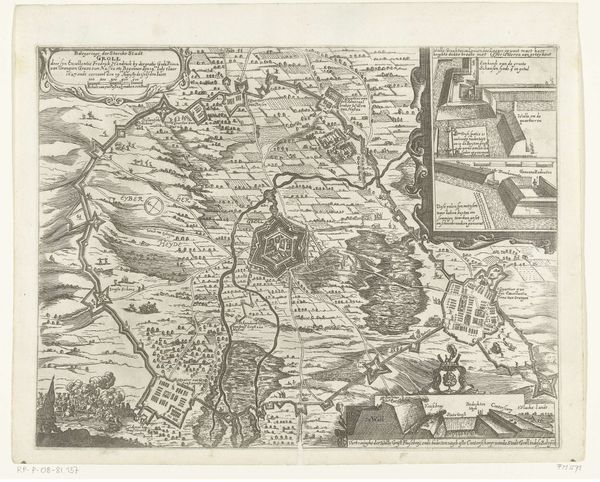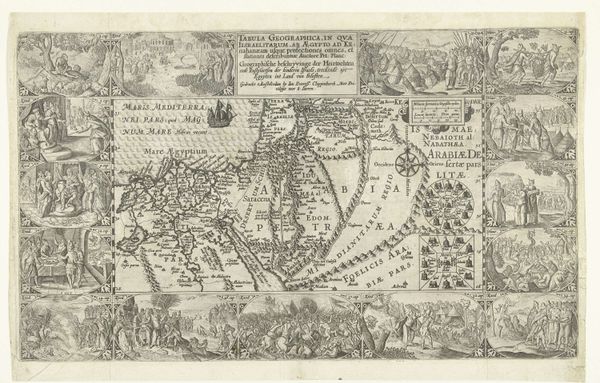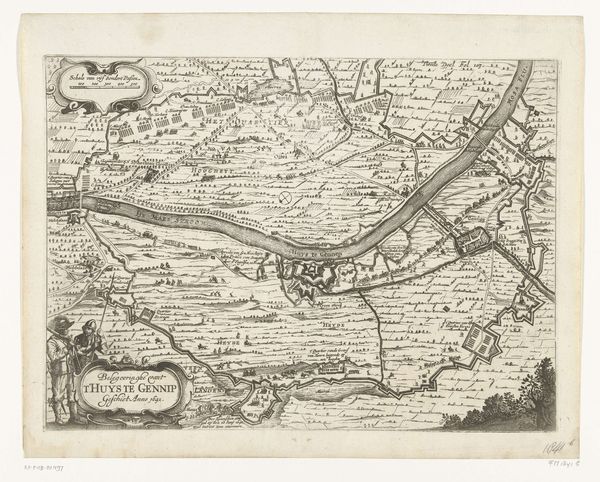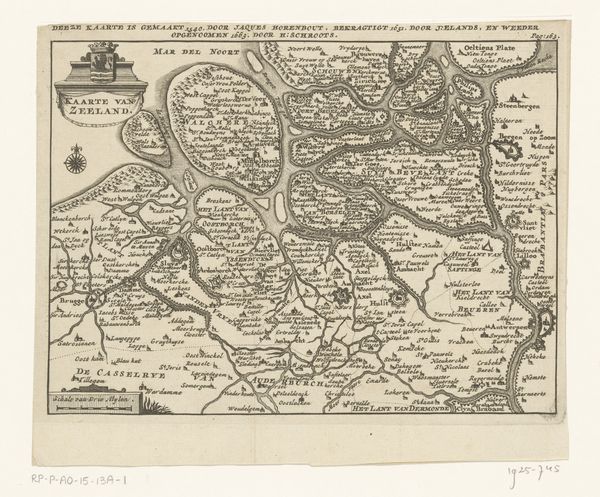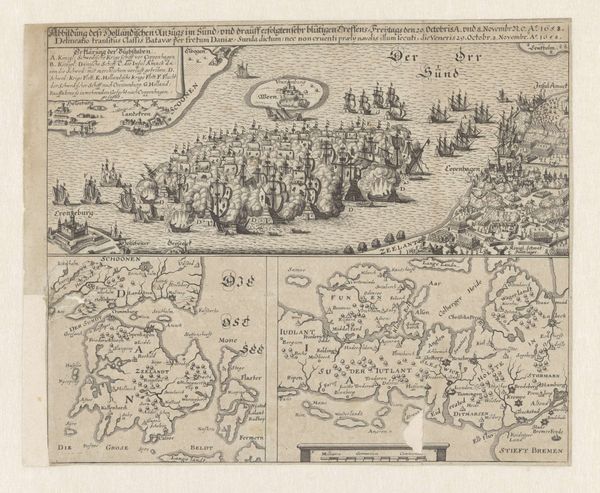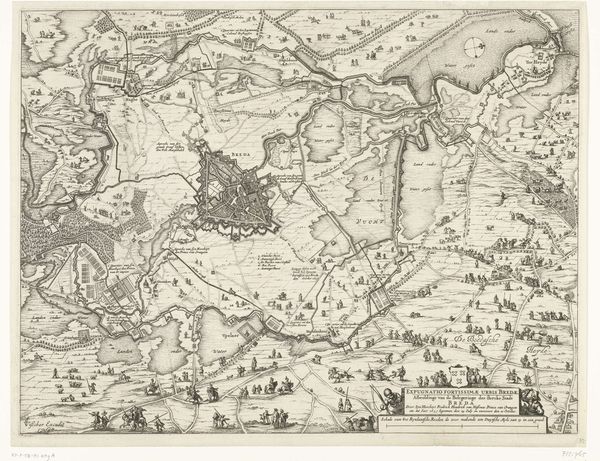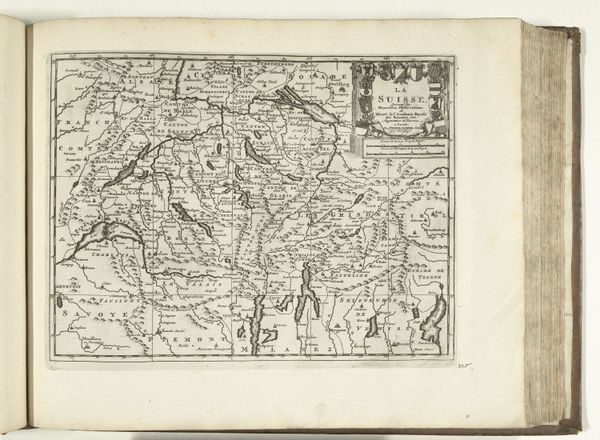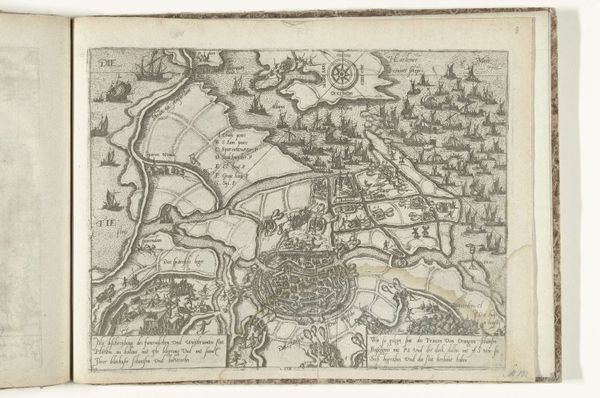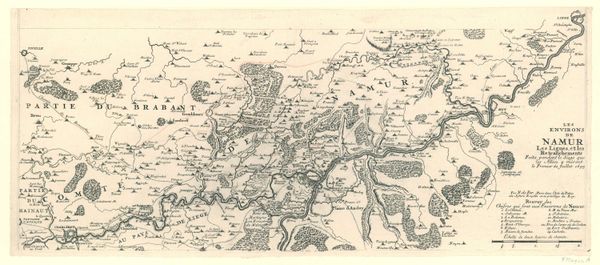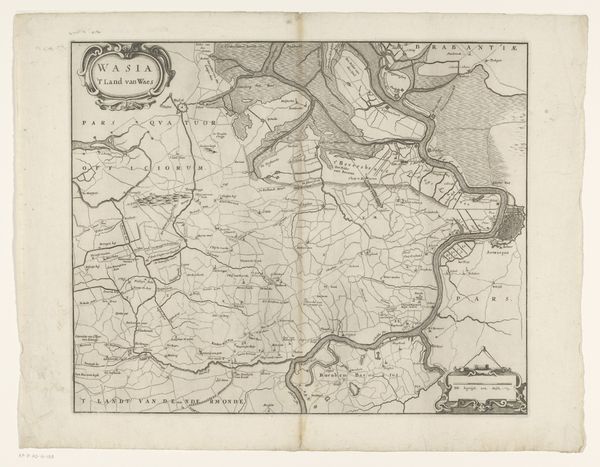
drawing, print, ink, engraving
#
drawing
# print
#
pen sketch
#
landscape
#
ink
#
geometric
#
genre-painting
#
history-painting
#
northern-renaissance
#
engraving
Dimensions: height 230 mm, width 319 mm
Copyright: Rijks Museum: Open Domain
Curator: Welcome. We're looking at a 1624 print titled "Inval van Hendrik van den Bergh in de Veluwe (kopie)," whose authorship remains anonymous. It's currently held in the Rijksmuseum. Editor: My first thought is, "What an incredibly busy composition!" The dense lines create a visual sense of almost overwhelming detail and activity. It has a strange, austere beauty to it. Curator: Indeed. The artist utilizes engraving, ink, and printmaking techniques to render what seems to be both a map and a genre scene, a collision of purposes that defines its unique style. Let's unpack some of the key motifs here. Editor: We immediately notice it depicts Hendrik van den Bergh's incursion into the Veluwe region. It speaks to Dutch resistance against Spanish occupation, reflecting a critical juncture in the Eighty Years' War. The image blends a military campaign narrative with contemporary mapping conventions, underlining power and territory during the era. Curator: Yes, the overlay of cartographic elements with miniature figural representations offers insight into the structural order the artist aims to impose. Consider the geometry inherent in the map itself versus the seemingly chaotic dispersion of figures in the scene below. Editor: Precisely! It's a negotiation between objective mapping and the chaotic realities of warfare, mirroring similar tensions across gender, class, and the political spectrum, during this time period. It offers interesting insights into national identity formation. Curator: Focusing on formal analysis, we see how linear perspective functions symbolically here, flattening pictorial space while simultaneously constructing a narrative of invasion and territorial acquisition. Notice also the contrasting texture from the highly detailed foreground versus the stylized representations of land. Editor: I can agree. It’s fascinating to see history painting intertwined with genre elements, giving voice to military history—depicting the strategies of territory. It reminds me to question, as it offers space for whom to assert themselves? Curator: It encourages an appreciation of how even seemingly simple prints reveal complex relationships between art and historical events. Editor: And reminds us that artworks are not silent witnesses but active participants in shaping our understanding of our past, of class and of cultural and territorial belonging.
Comments
No comments
Be the first to comment and join the conversation on the ultimate creative platform.
